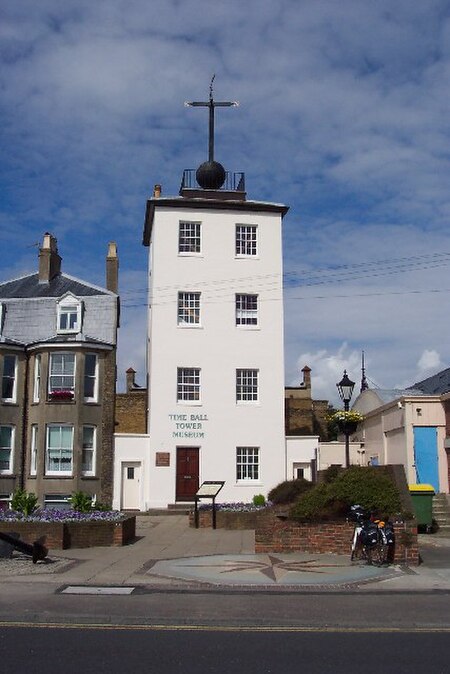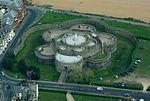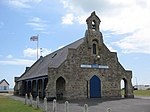Deal Timeball
Deal, KentMaritime museums in EnglandMuseums in Dover DistrictNavigational equipmentTechnology museums in the United Kingdom ... and 2 more
Time ballsUse British English from February 2018

The Deal Timeball is a Victorian maritime Greenwich Mean Time signal located on the roof of a waterfront four-storey tower in the coastal town of Deal, in Kent, England. It was established in 1855 by the Astronomer Royal George Biddell Airy in collaboration with Charles V. Walker, superintendent of telegraphs for the South Eastern Railway Company. It was built by the Lambeth firm of engineers Maudslay and Field. The time ball, which, like the Greenwich time ball, fell at 1 pm precisely, and was triggered by an electric signal directly from the Royal Observatory.
Excerpt from the Wikipedia article Deal Timeball (License: CC BY-SA 3.0, Authors, Images).Deal Timeball
Sondes Road,
Geographical coordinates (GPS) Address Nearby Places Show on map
Geographical coordinates (GPS)
| Latitude | Longitude |
|---|---|
| N 51.2219 ° | E 1.4042 ° |
Address
Sondes Road
CT14 7BW
England, United Kingdom
Open on Google Maps








